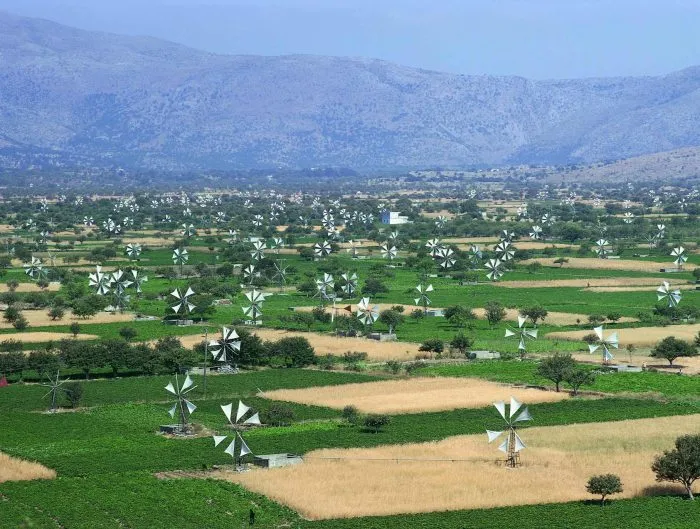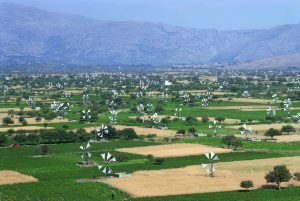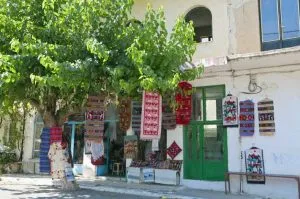Join me on a fascinating journey through Crete, an island where the air is fragrant with wild thyme and the melody of buzzing bees fills the landscape. This adventure delves deep into the heart of Cretan tradition, blending the ancient art of honey making in Crete with the island’s natural beauty and storied past.
To understand the full scope of what makes Crete a unique gem in the Mediterranean, explore our detailed account of its distinctive charm and allure.
The Humble Bee’s Elixir: Cretan Honey
In Crete’s sun-kissed lands, where the legacy of the ancient Minoans endures, bees flit among thyme, oregano, and wildflowers, crafting a golden elixir that reflects the island’s essence. My quest to uncover the secrets of Cretan honey led me to a traditional apiary, a sanctuary nestled in the island’s rolling hills, where the ancient dance between beekeeper and bee unfolds.

The beekeepers, inheritors of millennia-old wisdom, reveal how the diverse flora contributes to the honey’s unique taste. They share stories of ancient Minoans who regarded honey as a symbol of wealth and fertility, showcasing how deeply rooted honey making in Crete is within the island’s history. The collection process, rich in tradition, unfolds with a reverence for the bees, ensuring their well-being and the purity of the Cretan honey.
Each variety of Cretan honey, from the potent Cretan thyme honey to the milder pine and wildflower honeys, tells a story of the land it comes from, offering a sensory journey through Crete’s diverse landscapes and history.
A Symphony of Flavors: The Making of Cretan Honey
The creation of Cretan honey is a complex orchestra, where the island’s abundant flora and the beekeepers’ generational wisdom play the leading roles. This harmonious process begins in the vibrant spring, with heather plants when Crete’s landscape bursts into a kaleidoscope of colors and scents. Bees embark on their laborious journey, collecting nectar from the myriad of flowers that blanket the island. This first step is crucial, as the variety of nectar collected lays the foundation for the honey’s flavor profile. Procedure continues throughout the summer with ligaria plants and thyme and summer flowers.
Beekeepers, acting as stewards of this age-old craft, closely monitor the bees’ health and the environment to ensure sustainability. They use traditional methods passed down through generations, selecting the optimal time for honey collection to ensure the highest quality. The gathering of honey is performed with utmost care, using smoke to calm the bees, a method that minimizes stress on the colony while allowing beekeepers to extract the honeycombs.
For a deeper dive into Crete’s breathtaking natural landscapes, read about Kamariotis Village, nestled in the heart of the Psiloritis mountain range, which contributes to the island’s rich biodiversity.
Sustainability: A Legacy Preserved
Emphasizing sustainability, Cretan beekeepers are committed to practices that protect the island’s biodiversity and ensure the longevity of honey making in Crete. This eco-friendly approach safeguards the health of the bees and preserves the pristine nature of Crete’s landscapes, a testament to the island’s dedication to maintaining its ecological balance and rich honey-making heritage.

Case Study: Melkriton – A Modern Guardian of Tradition
As we dive deeper into the tradition of honey-making in Crete, it’s essential to highlight individuals who embody the island’s beekeeping heritage. Aris, the owner of the Melkriton company, is one such person, whose dedication to this ancient craft bridges the past and the present. I got to know him through the Legacy Hotel‘s concierge desk and am very thankful for that!
Located about one and a half hours from the center of Heraklion, Aris’s apiary lies within a sprawling 10-acre olive grove at an elevation of 480 meters in Kasteli. Here, the environment is ideal for beekeeping, surrounded by the diverse flora that contributes to the unique flavors of Cretan honey.
Diverse Offerings of Melkriton
Aris produces three distinct types of honey, each with its unique characteristics:
- Heather Honey: Harvested at the beginning of summer, this honey is derived from either the fall-flowering Erica manipuliflora or the spring-flowering Erica arborea. Known locally as “susoura,” heather is a critical plant for Greek beekeeping and thrives across the country.
- Ligaria Honey: Sourced from the Agnus Castus plant, which flourishes in the moist soils near streams and underground water flows. The nectar from Agnus Castus is dark red, while the pollen is olive-colored. This honey blooms from late June to September and is a favorite in semi-mountainous areas of Crete.
- Thyme Honey: A staple in Cretan apiculture, thyme honey is celebrated for its aromatic and resinous flavor, with a herbal, slightly spicy taste. It is produced during the summer months and varies in color from light orange to red, turning beige to brown when crystallized.
An Invitation to Tradition

Aris also offers an engaging experience for those interested in the nuances of honey production. Starting in April, he hosts a guided tour that includes a visit to his apiaries, a honey tasting session, and ends with a relaxing swim and meal at Tripiti beach. This excursion, lasting approximately 8 hours, not only showcases the meticulous craft of beekeeping but also offers a taste of Cretan hospitality and the island’s stunning natural beauty.
Culinary Wonders: Honey in Cretan Cuisine
Honey plays a pivotal role in Cretan cuisine, embodying the island’s culinary traditions and its bountiful nature. Its versatility is celebrated in various traditional Greek dishes, from sweetening the iconic baklava to enhancing savory recipes, where it balances flavors and adds depth. Cretan honey’s inclusion in local cuisine is a practice as old as the Minoan civilization, illustrating the timeless bond between Crete’s people and their land.
Embodying Crete’s Essence
Throughout Crete, honey is more than a mere food product; it’s a cultural emblem that encapsulates the island’s spirit, traditions, and respect for nature. Beekeeping is not just a livelihood but a way of life that reflects the Cretans’ deep connection to their environment, showcasing their commitment to sustainability and the preservation of their rich heritage.
Conclusion: A Sweet Farewell to Crete
My journey through Crete, in pursuit of its golden honey, has been an enlightening exploration of a culture that reveres its past while embracing a sustainable future. Departing the island, I’m not only enriched with jars of honey but also with lasting memories of a land where life’s sweetness is intricately woven into the fabric of daily existence, resonating with the harmony of nature and human endeavor.

The tradition of honey making in Crete stands as a testament to the island’s enduring legacy, from the ancient Minoans to modern-day beekeepers who carry forward the torch of this precious craft. The Cretan honey, particularly the revered Cretan thyme honey, symbolizes the resilience, beauty, and richness of Crete, offering a taste that is as timeless as the island’s storied history.
As I bid farewell to Crete, I carry with me not just the taste of its exceptional honey but a profound appreciation for the island’s commitment to preserving the natural environment and its ancient traditions. Crete’s golden nectar is more than a culinary delight; it’s a bridge connecting us to the past, a reminder of the delicate balance between nature and nurture, and a beacon of sustainability for future generations.
Through this journey, the Cretan honey has taught me the importance of harmony with nature, the value of heritage, and the art of sustainable living. Crete, with its azure skies, vibrant landscapes, and the golden nectar of its bees, remains a jewel in the Mediterranean, forever etched in the heart of those who have had the privilege to explore its traditions and taste its sweet offerings.
To continue your exploration of Crete’s wonders, take a virtual stroll through the charming city of Chania, a place where history, culture, and natural beauty converge.








































Leave A Reply